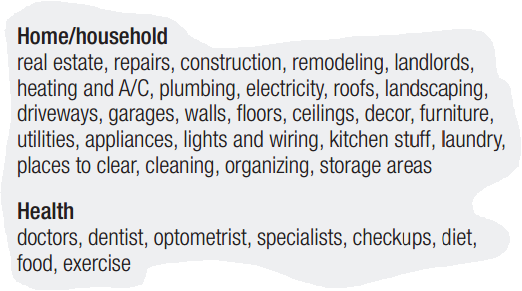Personal Productivity - Falling Off the Wagon
I use Getting Things Done to run most of my personal life. If you aren’t familiar with GTD, just know that it is a personal productivity method. The details of the method are not important, because falling off the wagon is a universal experience. It’s where you suddenly find that things don’t click anymore. Your method doesn’t work. Important things are not attended to. Tasks are forgotten. Emails unanswered.
Again, I stress, it happens to everyone. When I first started practicing GTD, I watched a talk by David Allen (the author) and what he said about this really stick. Since I couldn’t find a similar written passage from him, I transcribed a few bits from the talk:
I fall off the wagon regularly and fast.
By the way, it’s very easy to fall off the GTD wagon, for those of you who are familiar with this. It’s very easy to get back on. Very easy to get out of control. Very easy [snaps finger] to get back on. As long as you know how to do that.
So a lot of what I did is just make more conscious the process of how we get back on in case you get off. So if you’re on, this will just be a reminder about how you got there. A lot of people get on, but don’t know how they got there. They go “wow, I’m on, what happened?”. Then they fall off and go “damn, what happened?”. As opposed to understanding “here’s why I’m on, here’s what I did that created that” - it’s actually a duplicatable [sic] event once you figure that out.– David Allen, Getting Things Done Talk (from 02:08)
The point is that you should accept that you will occasionally fall off the wagon. The magic of staying productive is to:
- Identify that you have fallen off the wagon.
- Not stress out about it.
- Do the series of duplicable actions that got you on in the first place.
The strangest thing about this process is that the difficulty of each step is reverse to what you would naively expect. It’s hardest to know you’ve fallen off; not stressing out about this is easier; getting back on? since you’re executing a predetermined series of actions - trivial.
Identifying You’ve Fallen Off
It’s difficult to have a process of identifying your system is broken - because that process will, too, be broken. In GTD, you’re supposed to have a weekly review. If you procrastinate and skip the review, you’ve probably fallen off the wagon, but it’s difficult to identify without the review itself. When your system is broken, it’s difficult to use it to diagnose itself.
Knowing that you’re off is very personal. We each regress to certain behaviors without a system. The most important thing you can do is not prevent it, but identify it.
I fall off the wagon a lot, and there is one consistent tell-tale signal that strongly indicates I am regressing: I mark email as “unread”. When I’m on, email is either dealt with, or sent to my task management system. When I’m off, I just avoid dealing with it and mark it as “unread” - leaving it to future-me to take care of.
Finding out your tell takes time. Whenever you feel you’ve fallen off, try to introspect about the last few days and figure out how you’ve behaved. Resist the attempt to judge yourself on this behavior. You will fall off, so there’s no point in self-deprecation. Observe, do not judge.
Getting Back On
On the face of it, it sounds like this is the most difficult part, but in fact - it is easier and more enjoyable.
For instance, have any of you in here sort of felt you’re backed up against the wall, felt yourself sort of confused and a bit overwhelmed and you sat down and you made a list and you felt a little bit better?
Anybody ever do that?
If you’d figured out why that works, you’d never keep anything in your head the rest of your life.– David Allen, Getting Things Done Talk (from 03:13)
The solution for falling off is to empty your mind. Your brain is not intended for storage. I doubt any personal productivity method is based around keeping everything in your head. The first step is always to write it down. It doesn’t matter if you practice GTD, bullet journaling or just using a simple TODO app. Doing a mind sweep is like any other work - it requires the correct tools. My tool of choice is the Incompletion Trigger List. It’s a list of subjects and responsibilities, personal and professional, that will remind you of what’s stored inside your head and taking up precious RAM. Here’s a snippet:

The full list is available for free in PDF form from the free articles section of the GTD website (direct link to the PDF). I have it printed and next to my computer.
To perform the mind sweep, block yourself at least an hour, grab a pen and some paper (last time I did this, I filled up 4 notebook pages) and go through the list, one by one. Resist the urge to skim it - take time and think about each item, even if at first it seems irrelevant. Don’t structure everything just yet! Just write it down as it comes to you.
From here, it depends on your method. I input everything to my task management system and then go on to organizing it - some items are next actions, some are “someday/maybe” ideas, some are just names for complicated projects. The important thing is, you’re back on.
Discuss this post at the comment section below.Follow me on Twitter and Facebook
Thanks to Yonatan Nakar and Ram Rachum for reading drafts of this.